In lieu of a substantial, thought-provoking post, perhaps reflecting on the year, I present THE SPACE DOG, created when I was in second grade, interspersed with the sort of comments that might be offered by a severe critique partner.
Is this about Laika? If not, title should be changed. And do you want your readers to immediately think about your protagonist marking territory? If not, don’t put the dog among trees.
Okay, so she’s young and little — does she have a name? Where was she going when she got lost? What’s this about a trail she was “supposed” to go on? Who’s giving this dog orders?
Also, I’m not loving the brown-on-brown. We can barely see the dog. Is that a deliberate choice? Losing her in the illustration as she’s lost in the narrative?
And is that a tree, or a letter Y with a green cottonball on top? Can you explain why there only seems to be half an inch of sky? Are you playing with the picture plane? I get that formal experimentation can be a vital approach to graphic storytelling, but it seems an odd choice for this text.
All right, finally this story has some stakes. But you’re draining all the tension away by just baldly stating that she “accidently” (You have a spellchecker, right? I recommend using it.) got into a “test space ship.” How did it happen? What’s the test? Exclamation points are not a substitute for coherence. Good use of burst lines around the cop’s whistle, but why are there no NASA personnel depicted? Are the people in yellow intended to be perceived as wearing uniforms? If so, for what organization?
Also, I wish I did not need to point out that all your people are far too close to the ship, which incidentally lacks a platform. Research is important!
Ah, yes, Mars. The green planet. See above re: research. And again we have a sliver of colored sky, with what would appear to be stars, unless they are fireflies, or flashlights, or flaws in the paper — you give us no indication in the text. And again, you seem to wish to actively avoid all narrative tension. “She got out.” No panic upon realizing that she is trapped, no struggle to free herself — you deny your readers any chance to become engaged with the plight of your protagonist.
All right, I’ll ignore the massive physics fail and merely recommend, again, that you do some research. Again, you have entirely failed to create dramatic tension here. I don’t even know who this dog is! How am I supposed to care?
The arrow seems to suggest an interest in diagrammatic illustration. Perhaps in light of your artistic limitations, you should consider using that style throughout.
Pure wish fulfillment. Isn’t it really the author who would want to live in a world where she would never get lost again?
I will comment here only to note that this “owner” — is the lack of names meant to be universalizing? There are far better ways to achieve that goal — makes her first appearance on page seven of eight.
This haunting page almost redeems the ham-handedness of the rest of the narrative. The empty space calls into question the happy ending on page six, forcing the reader to wonder if “The End” is merely the conclusion of the story, or the end of the world.

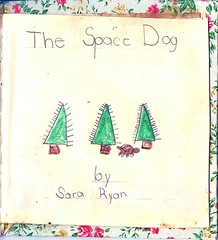
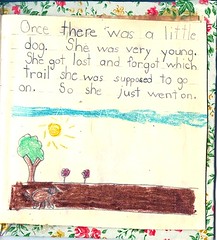
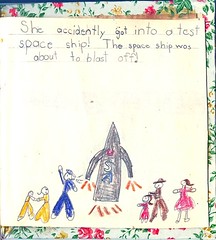
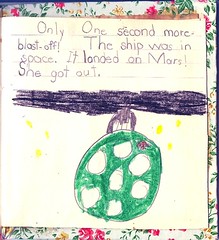
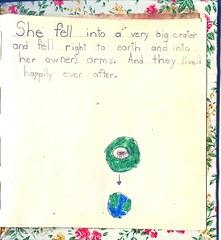


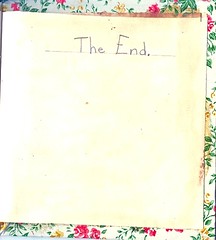
Mim
December 23, 2009 at 1:37 pmBrava! Excellent story, excellent annotation! (and remind me to show you my earliest known story sometime…)